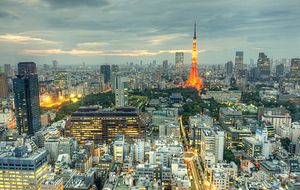The final revamped version of Prime Minister Shinzo Abe’s much anticipated “third arrow” of Abenomics, centered around economic structural reform, was released on Tuesday. However, it appears there is little in the way of concrete action that hasn’t already been released to the media over the last few weeks. The main issues of corporate tax reform, population decline and immigration, the Government Pension Investment Fund (GPIF), as well as trade and agricultural reform were all included, yet the deep, structural changes necessary to put Japan’s economy back on a path toward sustainable growth are either vague, long-term in nature, or largely absent from the plan.
Perhaps the most definite policy to be announced was the change to the corporate tax code, with the government announcing it will lower the effective corporate tax rate from around 35 percent to below 30 percent over the next several years, with the policy planned to start in fiscal 2015. Yet despite these specifics, there is significant debate within Abe’s own Cabinet as to how to implement them. According to the Jiji Press, there is no consensus about the baseline tax rate in the Cabinet, with “Finance Minister Taro Aso calling for a 5-percentage-point reduction from the law-based standard tax rate of 34.62 pct… [and] Economic and Fiscal Policy Minister Akira Amari demanding a 6-point cut of the effective tax rate of 35.64 pct for companies based in Tokyo.” The effective corporate tax rate differs by region because municipalities decide the local rate, and this adds to the confusion as to how it will be lowered.
The Abe administration has listed several policies to address lagging productivity due to Japan’s aging (and now shrinking) population, in order to stay above 100 million people by 2060. The plan calls for bringing in more foreign workers in the construction industry ahead of the 2020 Tokyo Olympics, allowing more domestic workers in the new special economic zones in order to free up Japanese women to join the work force, increasing the number of child-care centers, changing tax incentives, and stepping up government support for families with three or more children. However, there is no mention of a path to permanent residency for immigrant workers, and the path to maintaining a population above 100 million over the long term remains vague without significant immigration reform.
The government’s plans to liberalize investment at the GPIF, allow for greater corporate ownership in the agricultural sector, and implement the new special economic zones still appear to be in motion, although to greater or lesser degrees of success. Abe’s plan to minimize JA-Zenchu (which represents agricultural cooperatives) could lead to a greater consolidation of the agricultural sector (and thus better economy of scale), although the timeline to transfer JA-Zenchu’s authority to another government controlled entity is vague. The government’s ability to shuffle positions at the GPIF will probably also lead to a more aggressive investment policy, but again there has not been much news on how that will work. There has also been little new information so far on the proposed economic zones, and although government officials saying they will be launched by the fall, discussions over how they will work are just getting underway.
So why, with control over both houses of the Diet, does Abe appear to be so tentative and vague about structural reform? Unlike collective self-defense, implementing this type of economic change would not require Constitutional reform, and yet the Abe administration has proven much more tenacious about amending Article 9 than it has about making adequate reforms on issues like immigration, which would have a clear effect on Japanese economic growth. Despite the growing domestic unpopularity of collective self-defense (with 55 percent of the public opposed), the LDP is pushing to have a proposal agreed to by its coalition partner, so as to put it before the Diet before the end of the year, in order to include the change in the update to the Japan-U.S. defense guidelines. Abe’s administration has pushed for this fundamental reinterpretation of Japan’s pacifist constitution despite opposition from its coalition partner as well, and yet, with high public approval numbers for the LDP overall, the government is much more reserved about making changes that might be difficult to accept for its older, conservative base.
Abe said just this spring that allowing 200,000 new immigrants annually would be necessary for Japan to maintain its population, and thus economic stability, yet in the ensuing months he has steadily retreated toward a less effective and possibly counter-intuitive position. Immigration is certainly a sensitive issue for many Japanese, yet movement on this issue (even a much smaller increase of 20,000 to 50,000 immigrants annually) would be the signal to businesses and investors that Abe has been hoping to send, and would be much more likely to correct Japan’s “two lost decades” of decline.

































